Saucony Guide 15 Review Analysis (2022)
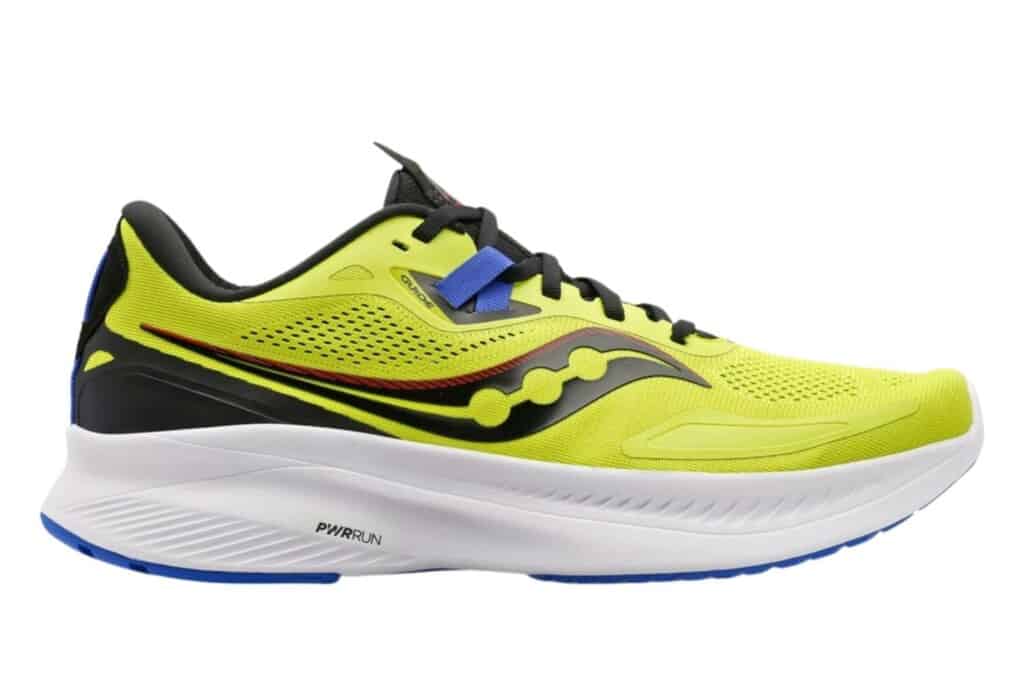
Last update: April 2024
The Saucony Guide 15 is one of the lightest stability shoes. It offers a protective and stable ride.
The Consensus
The Saucony Guide 15 is a lightweight running shoe dedicated to overpronators. Its cushioning is comfortable. The PWRRUN midsole technology is softer and lighter than before. The thicker midsole is increased by 2.5 mm, both in the forefoot and rear. It reaches 35 mm and provides decent bounce and shock absorption.
The sidewalls of the midsole feature discreet cutouts. Hollow-Tech TPU technology adds to stability.
The outsole consists of different densities of rubber—one firm for support, the other softer in the front. The grip is good on dry roads and less technical and wet terrain. The durability seems good, according to the testers.
The upper provides an excellent lockdown but is not soft. The toe box is adequate but doesn’t leave much room for wide feet.
As for the ride, testers find the Saucony Guide 15 pleasant. They report it’s an efficient, durable, and versatile running shoe.
This daily trainer is primarily for runners who overpronate but it can be suitable for anyone looking for lightweight support.
Please read our full review of the Saucony Guide 15 for more information.
- Very stable shoe
- Protective and dense cushioning for a comfortable and firm ride
- Excellent upper with high-quality support
- Medial support does not interfere
- The outer rubber is too thick in some places
- The toe box is a bit narrow
Saucony Guide 15 Complete Review Analysis
Introduction
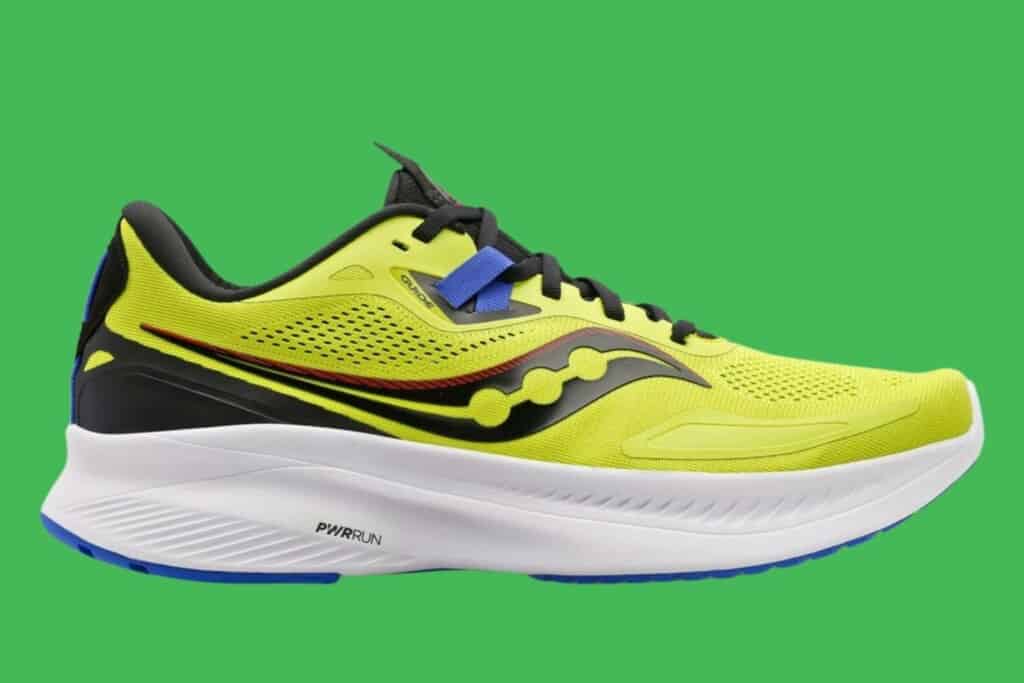
The Saucony Guide series is the brand’s stable running shoes. It has been in the daily trainer running game for 15 years. As a walking or running stability shoe, it’s among the oldest of its kind. For a long time, it stood out for its high quality. However, in recent years, it seemed to lose momentum and even disappeared from some stores.
This year, the Guide 15 is back with a bang! Testers praise its qualities with a great upper, excellent cushioning, and a durable outsole. But what are they like? Let’s find out.
Cushioning
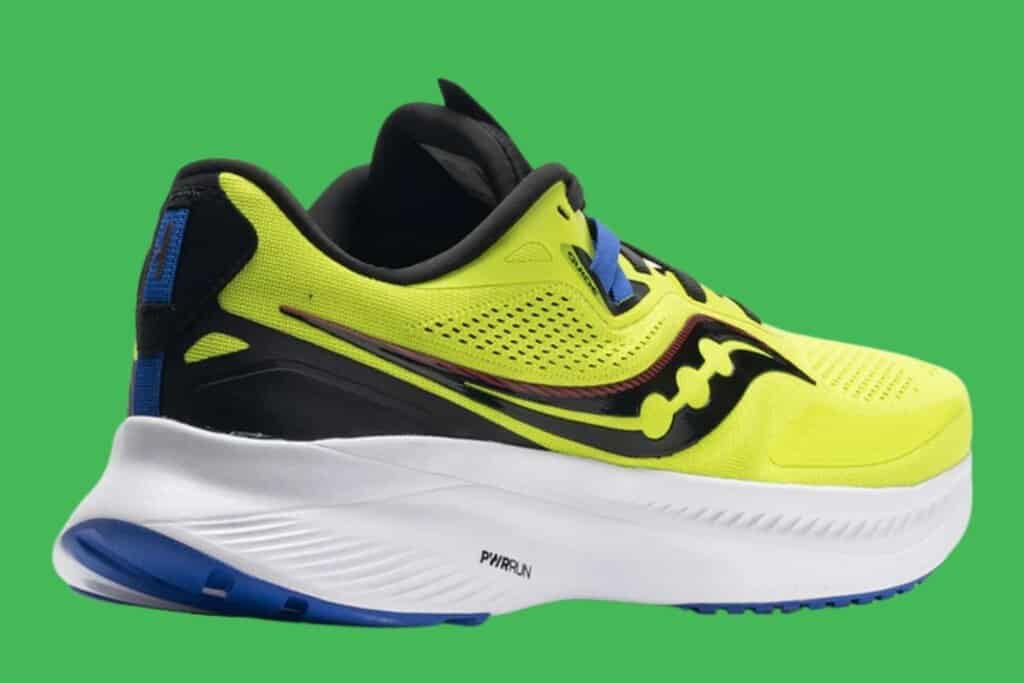
The PWRRUN technology now equips the midsole of the Guide 15. This single-density foam is quite flexible. It makes these running shoes lighter. They are lighter than their predecessors. The height rises by 2.5 mm in both the front and back. It reaches 35 mm at the heel. The heel-to-toe drop of the shoe is 8 mm.
A medial support Hollow-Tech TPU reinforces this sole. Discreet and effective, it replaces the previous models’ vertical plate, which was rather unpleasant. The stabilizing elements are so discreet that this trainer can also be suitable neutral runners. The transitions are fluid and straightforward from the midfoot to the front.
The cushioning is responsive and offers a good bounce. The shock absorption is correct, especially at a moderate pace. When the speed increase, it hits harder.
Foot lockdown (upper)
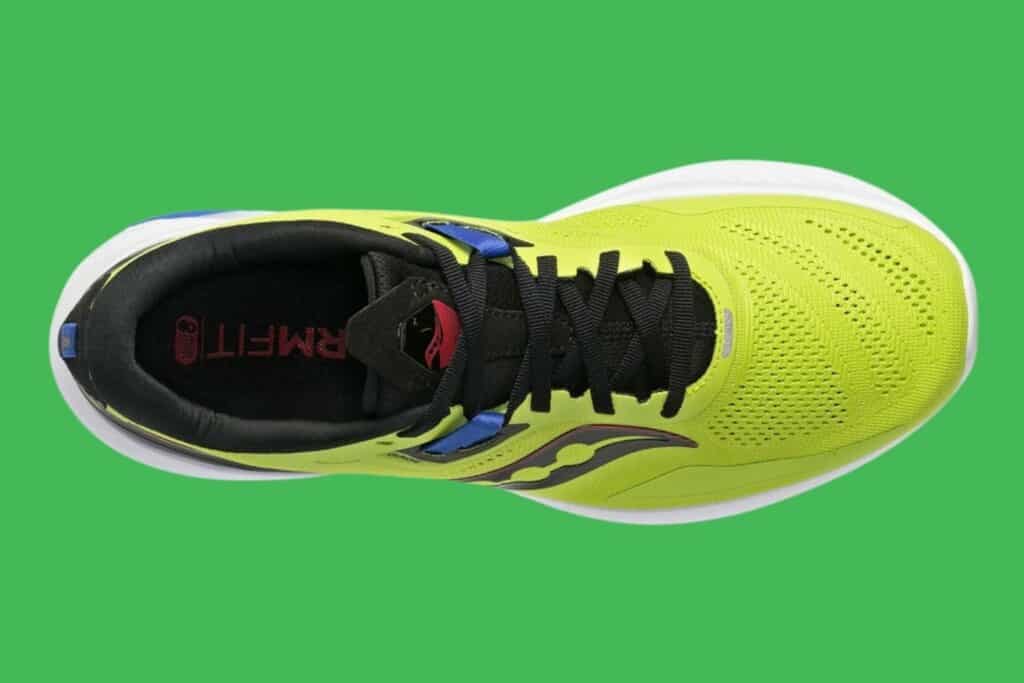
The upper of these Saucony Guide 15 running shoes is comfortable. Made with FormFit technology, it’s still roomy, even though its construction isn’t super flexible. It’s also available in a wide size in some stores. Testers report that this upper seems breathable.
The space in the toe box is sufficient to ensure that the toes are spread and swollen. However, some testers say it is not wide enough for very wide feet. The upper of this Guide 15 holds the heel well. The same goes for the midfoot when the lacing is appropriate.
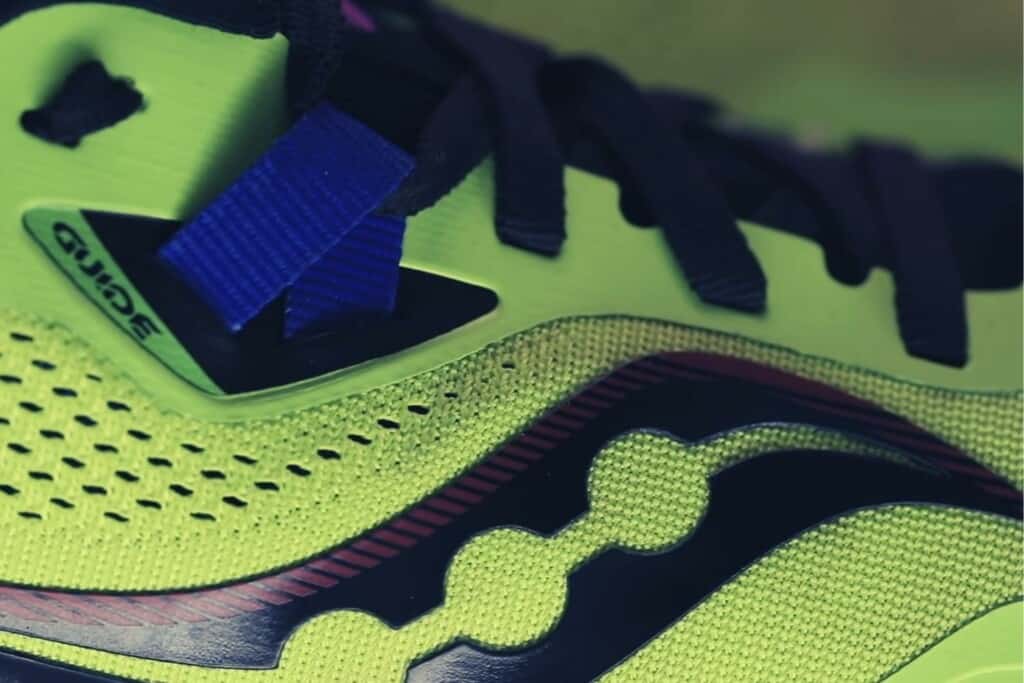
The upper of the Saucony Guide 15 is adorned with a dense engineered mesh fabric that is not plush. Those who appreciate softness and comfort reveal that there is no such feeling here. The mesh feels too thick for that.
The tongue is quite padded, especially on the sides. It doesn’t need to be crushed by the laces to provide a good lockdown and a secure fit. A vertical bumper protects the toes.
The Saucony Guide 15 weighs around 250 g/8.8 oz. This puts them in the lightweight category (yay!).
Grip and durability
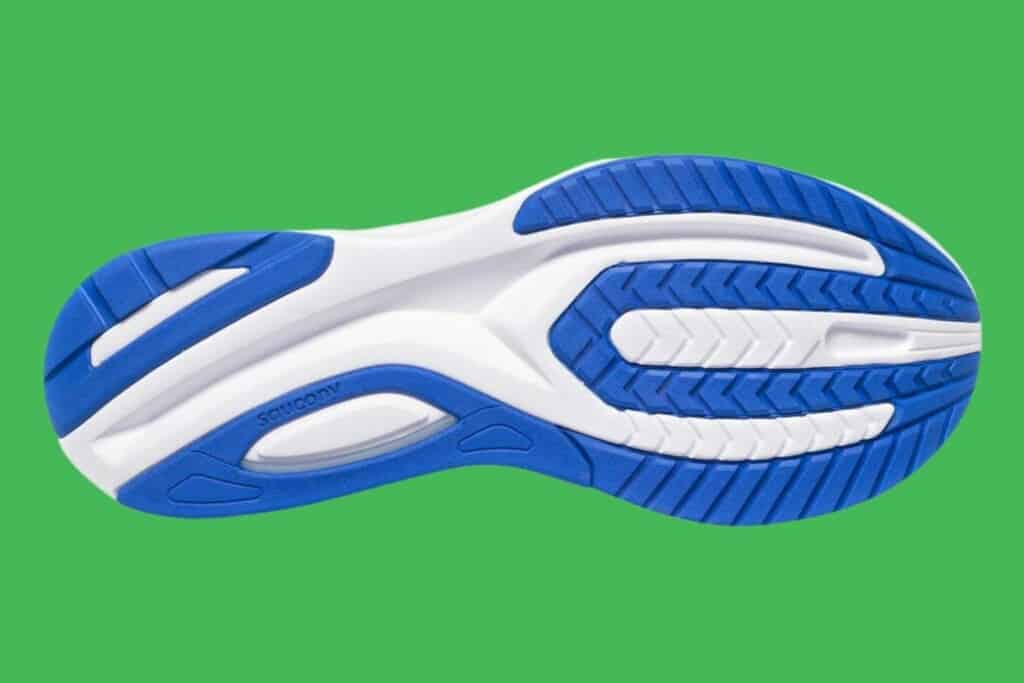
The outsole of the Guide 15, made of Crystal Rubber technology, is durable, according to those who tested it. It has two types of rubber. One is quite firm and covers the back and the beginning of the forefoot on the sides. It guarantees excellent support. This rubber is also thicker at the heel, just under the back curve. Some people found this thickness unwise. They would have preferred it less, even if it seems to participate in stabilizing the foot.
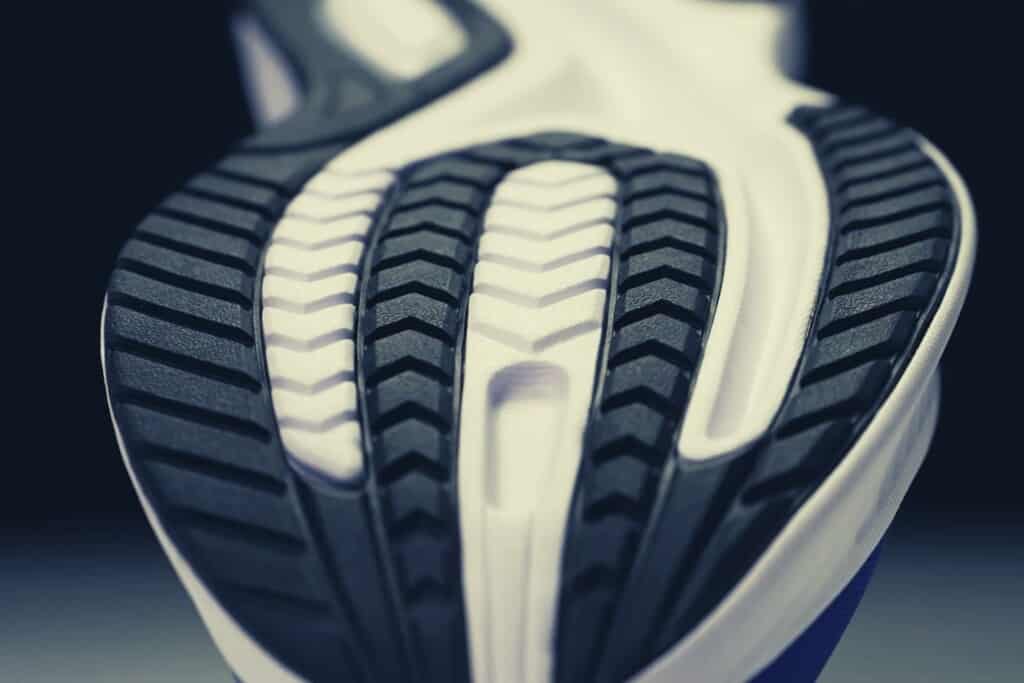
A softer rubber covers the forefoot. It contributes to smoother transitions and a better bounce.
The grip of this sole is excellent. It’s suitable for running on the road and on low-difficulty dirt paths.
The Ride
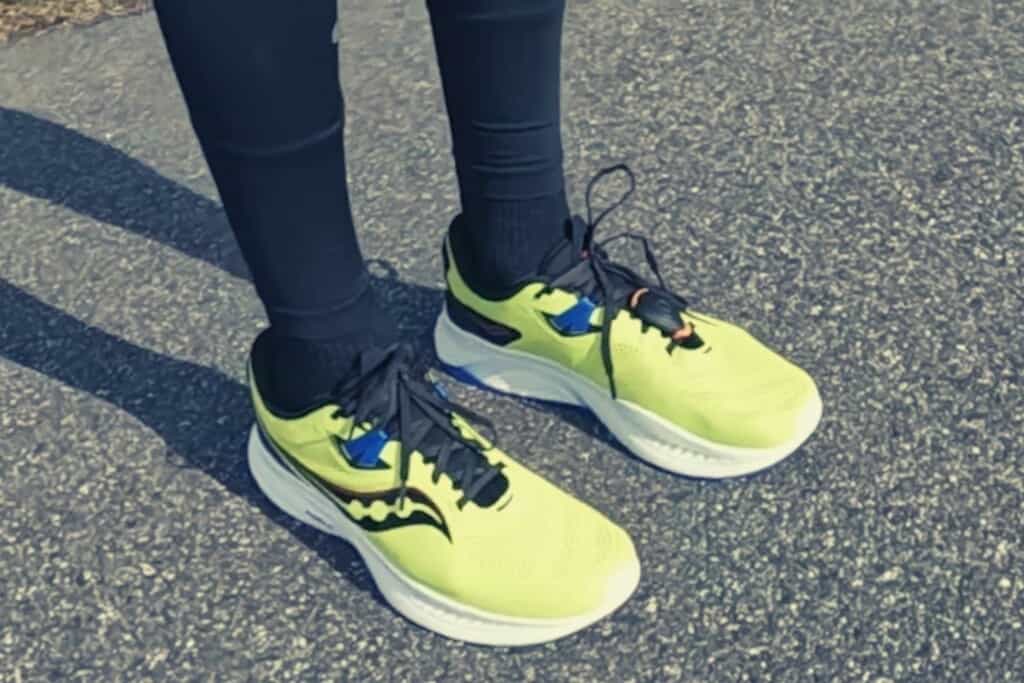
The ride feels great and provides adequate support for runners who need it. It’s especially impressive, considering how lightweight the shoes are. They also allow you to run for miles without tiring your legs.
Some testers note, however, that they are less efficient and pleasant at fast speeds. The Ride 15 is suitable for any training, provided you don’t go too fast.
The 8 mm drop of these shoes may surprise those who prefer a higher heel-to-toe drop (10 mm and above). It’s enough to make the ride fun and responsive.
Conclusion

The Saucony Guide 15 running shoes are light and comfortable shoes for overpronation. Because of their lighter weight, they are comparable to a neutral shoe and can also be suitable for runners with a neutral gait looking for enhanced stability. The support is discreet yet effective.
All in all, the Saucony Guide 15 is great for daily sessions. The only caveat is speedwork (e.g., uptempo or Fartlek), but that’s true for about any stability shoe.
Facts
Technical Specs
| Terrain | Road |
| Pronation type | Overpronation |
| Drop | 8 mm |
| Heel stack height | 35 mm |
| Forefoot stack height | 27 mm |
| Weight (men) | 269 g/9.5 oz |
| Weight (women) | 235 g/8.3 oz |
| Release year | 2022 |
Cushioning
| Softness (1-5) | 3 – Moderate |
| Bounce (1-5) | 2 – Low |
Technologies
| Outsole | Rubber |
| Midsole | HOLLOW-TECH, PWRRUN |
| Upper | Engineered mesh |
Use
| Speed | Slow, moderate |
| Distance | Mid, long, 10k, half marathon, marathon |
| Workout | Daily runs |
Reference: Saucony
Did you know?
Since 2017, we have analyzed hundreds of road running shoes, and thousands of runners trust us to find the perfect pair every month!
Discover our selection of the best 2022 road running shoes.
Comparisons – Saucony Guide 15 vs.:
Saucony Guide 14
Should we choose version 15 when the Saucony Guide 14 is still available?
- In lightness, it’s clear: the Guide 15 is the winner. The 14 was already relatively light for a model for overpronation, but the 15 is even lighter.
- The medial system is much less pronounced on the Guide 15, which will delight those who found the 14 to be well guided but not very ergonomic.
- Both models remain versatile but lean towards slower paces.
- The upper of the Saucony Guide 15 delighted testers overall. It provides a better lockdown than the 14.
So it seems that the Guide 15 is, at this point, a better investment than the 14.
Frequently Asked Questions (FAQs)
This shoe runs true to size. It’s also available in a wide version in some stores.
Yes, it’s a stability shoe and, as such, guides the foot to prevent overpronation.
